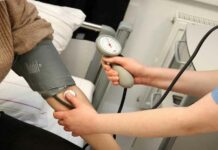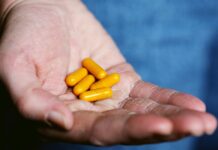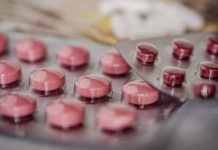Eli Lilly and Company (NYSE: LLY) and Incyte Corporation (NASDAQ: INCY) announced that detailed results of RA-BEACON — a pivotal phase 3 global study of baricitinib, a once-daily oral treatment currently under regulatory review for the treatment of moderate-to-severe rheumatoid arthritis (RA) — were published today in the New England Journal of Medicine.
The study met its primary endpoint of improved ACR 20 response for baricitinib compared with placebo at week 12. ACR 20 represents at least a 20 percent improvement across selected measures of disease activity.
ACR 20 response rates were as follows (P≤0.001 for each baricitinib dose versus placebo):
- 55 percent for baricitinib 4 mg
- 49 percent for baricitinib 2 mg
- 27 percent for placebo
The RA-BEACON study enrolled 527 patients who previously had failed at least one tumor necrosis factor (TNF) inhibitor, and included 199 patients who also had received prior treatment with one or more non-anti-TNF biologic agents. Patients received baricitinib 2 mg or 4 mg or placebo daily, in addition to their existing background therapies, for 24 weeks.
“The findings from the RA-BEACON study suggest treatment with baricitinib is associated with meaningful improvements in RA symptoms,” said Terence Rooney, M.D., Lilly’s senior medical director for baricitinib. “The baricitinib clinical development program includes a wide range of patients across the RA treatment spectrum. If approved, baricitinib may be a valuable option for rheumatologists and patients who are looking for new alternatives to treat this debilitating disease.”
“The RA patient community is diverse and there continues to be a need for more therapeutic options that address individual treatment needs, including in patients whose disease has not responded to TNF inhibitor therapy,” said Rich Levy, M.D., Incyte’s chief drug development officer.
A statistically significant improvement in ACR 20 response rate with baricitinib versus placebo was observed as early as one week (P≤0.01). ACR 50 and ACR 70 response rates were also significantly higher for baricitinib compared with placebo at week 12 (P≤0.01).
A significantly greater proportion of patients treated with baricitinib also achieved a DAS28-CRP score—a measure of RA disease activity—below 2.6 (indicating disease remission) at week 12 compared with patients receiving placebo. Additionally, a greater proportion of patients treated with baricitinib versus placebo achieved score improvements of at least 0.3 on the Health Assessment Questionnaire Disability Index (HAQ-DI)—a patient-reported assessment of physical function— at week 12.
Significant improvements in ACR response rates, DAS28-CRP and HAQ-DI that were noted with baricitinib versus placebo at week 12 were maintained through week 24.
Through 24 weeks, the rate of treatment-emergent adverse events (AEs) was higher for baricitinib 4 mg (77 percent) and baricitinib 2 mg (71 percent) than for placebo (64 percent). Discontinuation rates due to AEs were 6 percent, 4 percent and 4 percent, respectively. The most common adverse events reported for baricitinib-treated patients included headache, upper respiratory infections and nasopharyngitis. There were no opportunistic infections, cases of tuberculosis or gastrointestinal perforations. Rates of serious adverse events were 10 percent for baricitinib 4 mg, 4 percent for baricitinib 2 mg and 7 percent for placebo. One death was reported in the baricitinib 4 mg dose group (stroke).


















